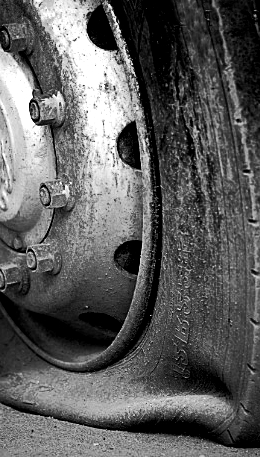Call for culture to drive truck safety
 A new study shows truck driver safety may rely more on psychology and business culture than on technical issues.
A new study shows truck driver safety may rely more on psychology and business culture than on technical issues.
It appears that good safety policies and a healthy approach to implementing them can stop some drivers’ tendency to treat driving at work as different to personal transport.
University of New South Wales researcher Lori Mooren has just completed her third study in the area of truck safety.
She says the modern appreciation of safety - running from company director down to drivers - has saved lives.
“Heavy vehicle fatalities have decreased by 32 per cent over the past decade,” she said.
“The trucking industry is one where employers do know that there are serious risks to their employees, to their cargo and to their business in using the road.
“They have been a lot more proactive than most employers in managing risks of using the road.”
But the stats show there is a way to go.
Right now in Australia, a person is 50 per cent more likely to crash in a company vehicle than a private vehicle.
“When people don’t own their own vehicle, they don’t treat it as well,” Mooren says.
“When they are travelling for work, they are often doing things like talking on a mobile phone, or they are in a hurry.
“The combination of distractions, speed and sometimes fatigue, are some of the reasons.”
Mooren says her studies in the trucking industry show that the ‘safety culture’ of a given business impacts the crash rates.
“You can measure things like the perception that workers have that their bosses are committed to workplace safety above other objectives,” Mooren says.
“When you have that culture of safety, then crash rates are likely to be lower.”
But is also works in reverse.
“A lot of research has found that some employers haven’t fully embraced the problem of crashes,” Mooren says.
“There is the attitude that someone else manages road safety, whether it’s the police or road authorities, and it’s really up to them to get people to follow the rules of the road.
“These employers are not owning the problem.”
Even pay rates and rules have a role in truck safety.
“Do they get paid for waiting time, for loading and unloading? That’s a big issue for fatigue,” Mooren says.
“I’ve spoken to drivers who say they start at 6pm and then they wait for sometimes up to four hours for their trucks to be loaded, which means that when they start driving, they’re already not fresh when setting out to drive all night.
“A lot of the industry is still being paid on a piecemeal basis, and that can be per kilometre or per truckload. This encourages drivers to work longer hours and do more shifts. When drivers get paid a regular wage per hour, day or week, they are less encouraged to work excessive hours.”
Ms Mooren says she will soon present more findings from her most recent studies, which will include information on how logistics companies can improve their approach to driver safety.








 Print
Print